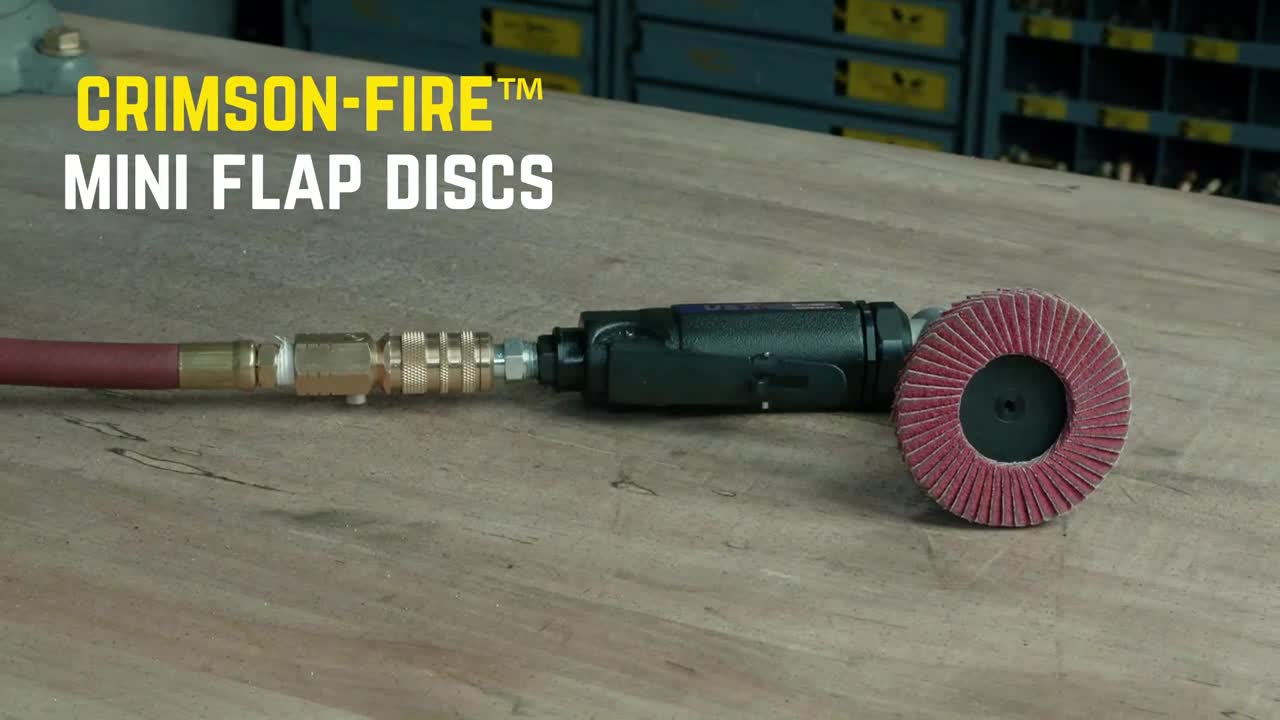You need an abrasive, and you don’t know where to start.
That’s understandable. There are tons of abrasives out there to choose from for all your various needs.
Here are some basics that will help you comprehend the best abrasive grain to work with for your application.
But first, a primer. There are several numbers you’ll want to understand if you don’t already, but it’s pretty simple: The lower the number, the more aggressive and larger the grain. For example, 24 grit is used to strip coatings or remove large amounts of stock to get down to a base material. You are taking off big imperfections. Once you are into 220 grit and higher, you are in the finishing stages of your piece and making things as smooth as possible. There are many levels of grit between 24 and 220, and you should gradually use finer abrasives to achieve the desired result.
Another set of numbers – and letters – are for sizes and mounts. This is a pretty simple thing to figure out by looking at your tool to determine if it takes 2” or 3” diameter discs or larger, as well as what type of mount it is. For example, a type “R” mount (the little knob on the back known as the plastic quick-change screw mount) or a type 27 or 29 design (the ones with the hole in the middle for use on angle grinders) or a ¼” shank (think drills or die grinders). But again, if you are just starting out, the machine you are using will help you figure that out.

OK, here’s the nuts and bolts. Or the aluminum, zirconia and ceramic …
For general purpose, occasional use: Aluminum oxide. Something that will last longer, zirconia. Even higher performance and longer lasting than that? Ceramic.
One of our sales reps in South Carolina recently explained this a little more in-depth.
According to him, aluminum oxide is a “general sanding grain” like what you see in sandpaper. This grain can offer fast, aggressive stock removal, as is the case with the 2” 24 Grit Mini Grinding Disc. And some, like the Coral-Kut Grinding Discs, expose sharp new edges as the granules wear down.
Zirconia grains are a “little bit better,” the rep says. Abrasives like the Kim-Kut Zirconia last longer and cut faster than conventional aluminum oxide discs and wheels.
However, both grains “tend to glaze over after they’ve run for a while,” the rep says, “and they begin to generate a lot of heat.” He further explains that aluminum oxide and zirconia discs can contaminate and discolor the work surfaces once they begin to heat up, so those are grains you’ll want to watch carefully if your work is prolonged.
“The nice thing about our ceramic line …” the rep says, “is that they run cooler, they don’t discolor the work surface. They won’t add any contaminants. It’s just a much better grinding grain. They last longer, they’re sharper, they (typically) don’t glaze over.” He points out they are more expensive than zirconia and aluminum oxide, but he explains the differences to customers to justify why ceramic is worth the cost.
We have pages in our catalog that can help you get even more information and do a little more research on our blog. Or, you can 
.png?width=131&height=58&name=image%20(40).png)
